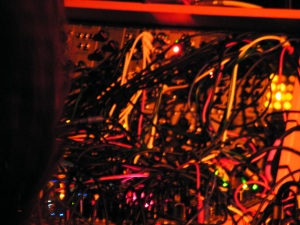When I booked a bunch of tickets for The Rest Is Noise festival, this was the one I was most looking forward to. I had heard part of the symphony when it was broadcast as part of a BBC Proms series so was a little familiar with its non standard format.
When Messiaen was given the commission for this piece he was told make it as long as you like and have an orchestra as big as you like. The orchestra is big, a full percussion line up at the back with xylophone and vibraphone given prominence at the front. Messiaen was interested in Indonesian Gamelan and there is a slight recreation of this using these instruments in the symphony. Also used is an odnes martenote, an early electronic instrument with sound similar to a more gentle theramin. Full brass and woodwind instruments suggest this is a band to blow the roof off. When the music starts we are on a ride. The rhythm drives us along telling us that love is ecstatic and exciting. At points the music is clearly describing the physical act of love making. Messiaen is intimate in this description. Where Led Zeppelin might’ve given the rock boys a laugh with their imitation of sex in song, Messiaen is not holding back telling us how special love making is.
The symphony maintains a rhythmic flow only letting up for short but beautiful interludes. It is a long piece of music but I was hooked from start to finish. It seemed fitting that a young orchestra should be playing a relatively young piece of music, as if the energy required to sustain the pace is only available to a young person.
At the finish the audience sustained clapping for several minutes. If I have a gripe it was with the audience, or lack of it. My ticket cost me what some spend on a couple of trips to an overpriced coffee shop, yet there were far to many spaces in the festival hall. This music is fantastic and should be heard more. Londoners really should make use of the chance to here a young orchestra playing amazing music.
A medley of traditional gamelan music
I may have been a bit harsh, this is Led Zeppelin and its pretty bloody good.





